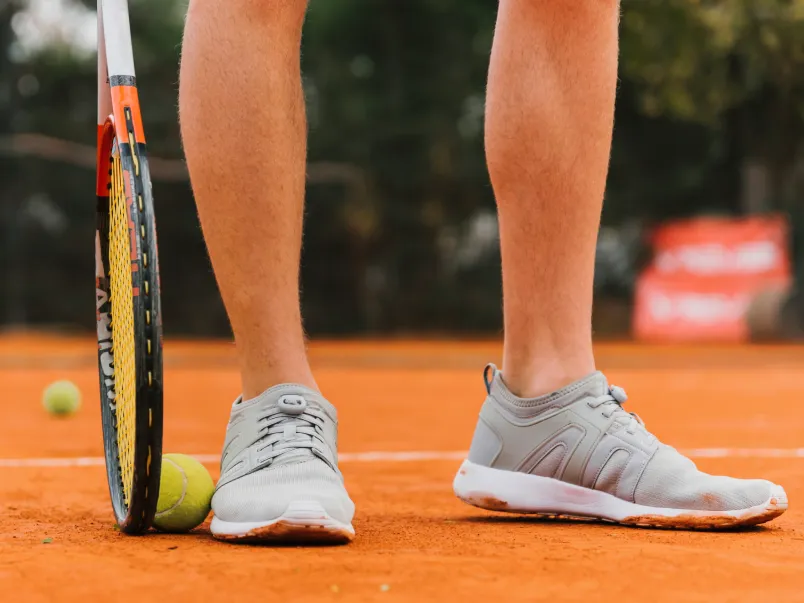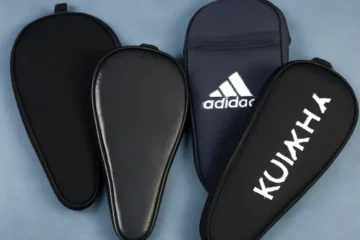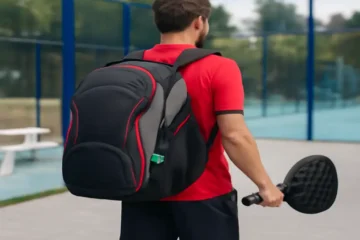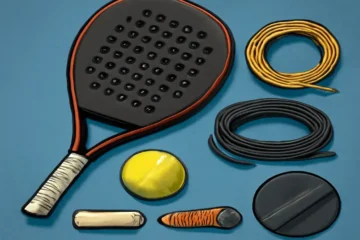Padel is a fast-paced sport that demands agility, stability, and explosiveness from its players. Whether you’re a beginner or an advanced player, the right footwear can elevate your game while ensuring your safety and comfort. If you’re still using tennis shoes or generic sports shoes for padel, you may not be getting the support and grip you need. This guide will walk you through the importance of selecting the right padel shoes, the key features to look for, and review the top models on the market to help you find the best pair for your needs.
Why Padel-Specific Shoes Matter (Don’t Just Use Tennis Shoes!)
The Unique Demands of Padel
Padel is distinct from tennis, squash, or other racquet sports in several ways, and its court-specific needs can’t be met with just any sports shoe. The game involves explosive lateral movements and rapid direction changes that require footwear designed for these specific motions. You’ll also need a low-center-of-gravity build that allows for constant readiness during fast volleys or defensive shots.
Additionally, padel is often played on artificial grass courts that are abrasive, demanding shoes that can withstand constant friction and provide grip without wearing out too quickly. The combination of these factors makes padel-specific shoes essential for maximizing performance and minimizing injury risk.
Key Differences from Tennis & Squash Shoes
While tennis and squash shoes are designed for forward and backward movement, padel shoes are optimized for lateral and diagonal agility, especially when navigating the court’s glass walls and quick turns. Here are the key differences that set padel shoes apart:
- Outsole Pattern: Padel shoes feature deeper, more aggressive herringbone tread patterns, perfect for the multi-directional grip needed on sandy courts. This tread design ensures you can pivot, stop, and accelerate without slipping.
- Lower Profile: Padel shoes typically have a lower-to-the-ground design, enhancing stability and making it easier to shift direction quickly. This is particularly important for the fast-paced nature of the sport.
- Reinforced Design: With padel’s emphasis on lunges and low volleys, the shoes often come with added toe protection to prevent damage from dragging the shoe during fast, low movements.
Key Features to Look for in a Padel Shoe
1. The Grip (The Non-Negotiable)
Outsole Material: One of the most crucial features of a padel shoe is its grip. To ensure excellent traction on court surfaces, a high-quality gum rubber outsole is essential. This non-marking material delivers the perfect combination of grip and durability, which is ideal for artificial grass courts.
Tread Pattern: Padel shoes use herringbone or multi-directional patterns, which provide excellent traction and prevent slippage during lateral movements. These patterns are tailored for both stability and quick, reactive movements on the court.
Durability: The sole compound must strike a balance between grip and longevity. You don’t want a shoe that wears out too quickly, but you also need maximum traction to avoid injuries.
2. The Comfort & Cushioning (For Long Sessions)
Midsole Technology: After a few hours of intense play, comfort becomes paramount. Shoes equipped with EVA foam, gel inserts, or even Energy Rods (materials designed to absorb shock) offer enhanced cushioning to minimize joint fatigue and protect your feet. Look for shoes that incorporate these technologies to reduce the impact on your knees and ankles.
Heel-to-Toe Drop: The heel-to-toe drop (the height difference between the shoe’s heel and forefoot) plays a significant role in your posture and overall movement. A lower drop (4mm–6mm) is often recommended for padel, as it promotes a more natural stride and improves your balance and agility during lateral movements.
Breathability: Padel matches can get hot, so shoes with mesh uppers are important for keeping your feet cool and dry. Proper ventilation helps prevent discomfort and foot odor, especially in long training sessions or matches.
3. The Stability & Support (Injury Prevention)
Lateral Support: Since padel involves frequent lateral movement, it’s vital to choose shoes that offer strong lateral support. Look for shoes with a reinforced midfoot that prevents rolling your ankle during sudden side-to-side movements.
Heel Counter: The heel counter is the back part of the shoe that holds your heel in place. A firm, locked-in heel is essential to provide stability and minimize the risk of injuries, such as sprained ankles or blisters.
Overall Fit: The fit of the shoe is critical for control on the court. A snug fit around the foot (without being too tight) ensures maximum responsiveness and reduces the chances of blisters or discomfort during play.
4. Durability & Toe Protection
The toe area of the shoe often takes a lot of abuse during padel, particularly from lunges and low shots. A reinforced toe cap helps protect against these repeated impacts and prolongs the lifespan of the shoe. If you’re an aggressive player, this feature is essential.
Reviews of the Best Padel Shoes for Grip & Comfort
Now that we’ve covered the essential features to look for, let’s review some of the top padel shoes currently available. These shoes combine the best of grip, cushioning, and support to ensure you have the best possible performance on the court.
Category 1: The All-Round Performer
Adidas Adizero Ubersonic 4 Padel
- Pros:
- Lightweight and agile, ideal for fast-paced play.
- Excellent grip with a durable rubber outsole.
- Comfortable cushioning suitable for long sessions.
- Breathable mesh uppers to keep your feet cool.
- Cons:
- Some users report the fit being slightly narrow, not ideal for wide feet.
Category 2: The Max Comfort & Cushioning King
Asics Gel-Rocket 11 Padel
- Pros:
- Renowned Gel cushioning system provides unmatched comfort, reducing joint stress.
- Lightweight design with superior breathability.
- Great for players with joint issues or those who play frequently.
- Cons:
- May not provide as much lateral stability as other models.
Category 3: The Stability Powerhouse
Bullpadel Vertex Comfort 2024
- Pros:
- Superior lateral support with a locked-in feel.
- Reinforced toe protection for aggressive movements.
- High durability and great grip on both dry and wet courts.
- Cons:
- Heavier than other models, making it less ideal for those prioritizing speed.
Category 4: The Best for Wide Feet
Head Sprint Pro 4.0 Padel
- Pros:
- Spacious fit with ample room in the toe box.
- Excellent grip and stability for all types of movements.
- High comfort with a cushioned midsole.
- Cons:
- Some players find the shoe a bit too bulky for faster movements.
Category 5: The Budget-Friendly Champion
Nox ML10 Pro Padel Shoe
- Pros:
- Great value for money with solid performance and durability.
- Decent grip and cushioning for the price.
- Comfortable and breathable design.
- Cons:
- The design is more basic compared to premium models.
How to Choose: A Quick Buyer’s Guide
When selecting the perfect pair of padel shoes, consider these factors:
1. Consider Your Playing Style:
- Aggressive Attacker: If you focus on power and attack, prioritize stability, toe protection, and support.
- Fast Defender: If you rely on speed and agility, opt for a lightweight shoe with exceptional grip.
- All-Rounder: If you play a balanced game, go for a shoe that provides a blend of grip, comfort, and support.
2. Consider Your Physiology:
- Arch Type: Players with flat feet may benefit from additional arch support, while those with high arches should look for more cushioning.
- Foot Width: Wide-footed players should choose shoes with a roomier fit to avoid discomfort during play.
3. Consider the Court Surface:
- If you mostly play on new, sandy courts, you’ll need a shoe that provides excellent grip and durability.
- For faster, worn-out courts, look for shoes that balance grip and speed.
Frequently Asked Questions (FAQ)
Can I use indoor court shoes for padel?
Indoor shoes are not designed for the unique demands of padel. They lack the right tread pattern and durability for artificial grass courts.
How long do padel shoes typically last?
With proper care, a good pair of padel shoes should last between 6 months to a year, depending on how frequently you play.
Should my padel shoes feel tight at first?
No, your shoes should feel snug but not tight. They should provide a comfortable fit from the start, with no pinching or excessive pressure.
How do I break in my new padel shoes?
Wear them around the house for a few hours before using them on the court. This will help mold the shoe to the shape of your foot.
What’s the difference between men’s and women’s padel shoes?
Women’s shoes are generally designed to fit the female foot’s narrower shape and different anatomical features.
Conclusion
Investing in padel-specific shoes designed for grip and comfort is one of the best decisions you can make to enhance both your game and physical health. A well-chosen pair of shoes will support your movement, prevent injuries, and make every session on the court more enjoyable.
Frequently Asked Questions (FAQ)
1. Can I use indoor court shoes for padel?
Indoor court shoes are designed for smooth surfaces and lack the necessary grip and durability for artificial grass courts, which are common in padel. It’s recommended to use shoes specifically designed for padel to ensure optimal performance and safety.
2. How long do padel shoes typically last?
Padel shoes can last between 6 months to a year, depending on how often you play and the type of surface you play on. Regular maintenance and proper care can extend their lifespan.
3. Should my padel shoes feel tight at first?
Your padel shoes should feel snug but comfortable right out of the box. They should not be overly tight or cause discomfort. If they do, you may need a different size or style that suits your foot shape.
4. How do I break in my new padel shoes?
To break in your new padel shoes, wear them around the house or during light activities to soften the materials. This helps the shoe mold to the shape of your foot before using them for intense play.
5. What’s the difference between men’s and women’s padel shoes?
Men’s and women’s padel shoes differ in their design to accommodate different foot shapes. Women’s shoes typically have a narrower fit and are designed with considerations specific to female biomechanics.
6. Can I wear my padel shoes on other surfaces?
While padel shoes are designed for artificial grass and similar surfaces, they can be used on other court types. However, they may not perform as well on indoor or clay courts compared to shoes designed for those surfaces.
7. How can I ensure my padel shoes last longer?
To extend the lifespan of your padel shoes, make sure to clean them after each use, store them properly (away from direct sunlight), and rotate between two pairs if you play regularly.




